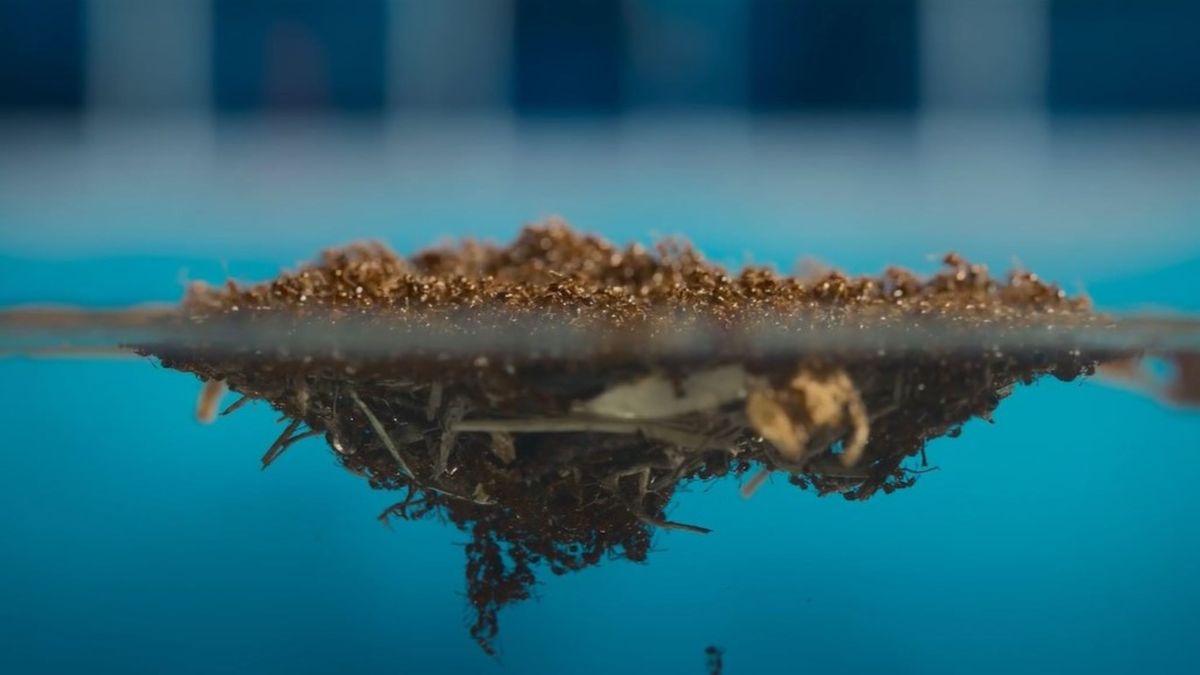Amazing new footage captures the moment when thousands of fire ants (Solenopsis invicta) create a life-saving raft by interlocking their limbs and mandibles.
Watch 5,000 fire ants create raft with their bodies to save colony and queen from death by swimming pool https://t.co/JibuXyUQAb
— Live Science (@LiveScience) January 20, 2024
The clip, from National Geographic’s new series “A Real Bug’s Life,” which premieres on Disney+ on Jan 24, shows a colony of fire ants living beneath a water feature in the backyard of a home in Texas. As the water level starts to rise, the colony is seen collecting their babies and banding together before being swept over a waterfall and into a swimming pool.

Fire ants formed a floating raft to save the colony from drowning in a swimming pool. (Image credit: National Geographic/Disney+/A Real Bug’s Life)
Ants are known for their collective social behavior in large colonies. When they try to swim, however, their kicking legs actively repel one another. Despite this repulsion, fire ants in groups of 10 or more are forced together by a phenomenon called the “Cheerios effect,” which is caused by surface tension. This occurs when small objects, like cheerios in a bowl of milk, create a concave indentation on the liquid’s surface that brings nearby objects together into clusters.
At one point the fire ants seek refuge on the head of a yellow rubber duck. (Image credit: National Geographic/Disney+/A Real Bug’s Life)
The fire ants exploit this phenomenon to protect their queen. The larvae, pupae and worker ants are brought together, then interlock their legs and jaws to form a large raft that dips in slightly at the center. Then they place the queen on top, sitting safely in the center of this massive raft. .
The ants’ nest was found while scouting backyard locations for shooting footage. Location scouts turned on a water feature in a pool, unaware that a colony of fire ants was living inside. The fire ants then flooded the pool. Bill Markham, the series producer, told Live Science that they recorded this intricate behavior with the help of Drexel University entomologist, Sean O’Donnell, using “macro lenses, split-level housings and super slow motion”. Although the team did not count how many ants were part of the raft, Markham said “there were easily 5,000 on this occasion” and to their surprise, they found the ants collected trapped air bubbles to keep the raft afloat and remain buoyant.
By smooshing together to protect their queen, they create a structure that “would take 400 times their body weight to break” said Markham. He added that these rafts can stay afloat for 12 days, but in this case they found a pool noodle and got to dry land within a few minutes.






